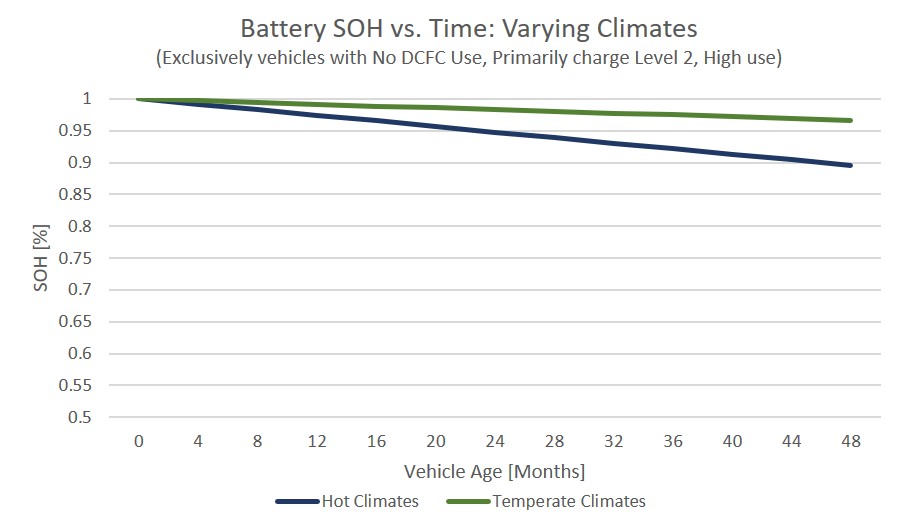Now, I don't think 90F will hurt the battery.
It will be fine and can stand a really large temperature variation.
Both of these statements are true, but battery degradation is not a binary function. It's not a question of whether the battery is "hurt" or "fine". Li-Ion battery storage temperature affects degradation. Higher temperature is worse.
However, the real question is whether the cost to cool the garage is worth the value gained by reducing battery degradation. To evaluate that you need to know how much degradation would be expected at any given storage temperature and unfortunately that data is not readily available. So you're left to decide without much data.
FWIW, if I had a cooled garage, I'd probably set the HVAC it to keep it under 90 or 95F. (I recall the unfortunate situation when I was living in Las Vegas. We'd park two cars inside our garage at night that had been stored outside heating up in the sun each day. The garage air temp would still be over 100F
in the morning. Those storage conditions would be nasty for an EV.)
Here's a relevant data set:
Source:
What can 6,000 electric vehicles tell us about EV battery health? | Geotab
Relevant text:
Vehicles driven in hot temperatures show faster decline in battery SOH
A battery exposed to very hot temperatures will be prone to more damage, but by how much? Will an EV in Arizona have a different battery life than the same car driven in Norway? To find out, we grouped the vehicles based on the following climate conditions:
- Temperate: Fewer than 5 days per year over 80 F (27 C) or under 23 F (-5 C).
- Hot: More than 5 days per year over 80 F (27 C).
As illustrated below [above], vehicles driven in hot climates showed a notably faster rate of decline than those driven in moderate climates. This is not great news if you and your fleet toil under the hot sun.
Some tips for operating your EVs:
- Climate is out of an operator’s control, but do what you can to avoid extreme hot temperatures, such as choosing shade when parked on hot days.



